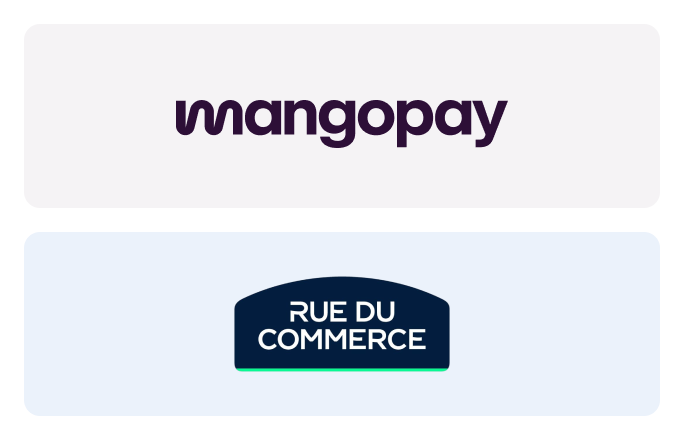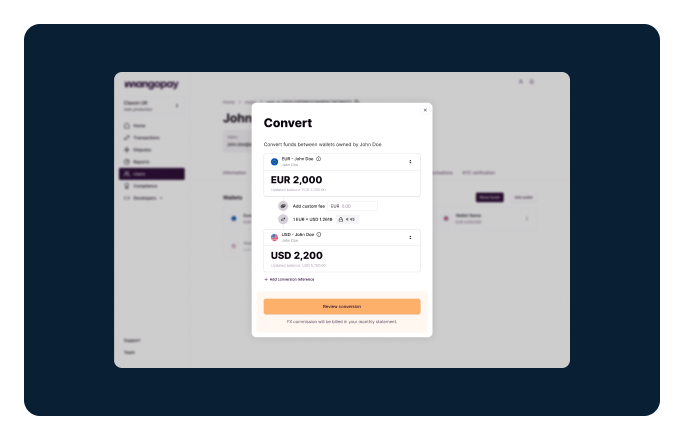Conversion costs are eating your profits
Conversion costs can be higher than you might expect. Learn more about the potential hidden fees in the cross-border payments journey and how to avoid them.


With platforms selling their products and services worldwide, there’s a massive money movement every day. This international reach offers an excellent opportunity for more revenue generation, business growth, and global expansion. As businesses extend their operations worldwide, cross-border payments become a key part of today's digital economy.
However, this global financial activity comes with its own set of challenges, particularly when it comes to conversion costs. Going through different banking systems and handling the volatility of FX rates can add significant expenses to the bottom line.
A Corpay study highlights that intermediary banks charge an average fee of 3.39% for cross-border payments. In Europe, the average fee for converting currencies (euros to dollars) is 2.06%. And for sending USD to USD within Europe? The fee jumps to 4.18%. This means that even when transactions are conducted entirely in one currency, banks often apply substantial administrative fees to each transaction.

Source: Corpay
Moreover, the fees associated with currency conversion are often hidden within the rates provided by banks. Intermediary banks typically apply a markup on the base exchange rate, which is higher than market rates, silently eating a business's profits without them even realizing the extent of these additional costs.
Let's take a closer look at where these hidden fees come from and how you can prevent them from affecting your profit margins.
Where do conversion costs occur in the transaction journey
Here are the key points in the transaction journey where FX costs usually arise.
Pay-in
When buyers make cross-border purchases using their local currencies, two instances occur for converting the currency. In the same currency transactions, money is converted within different countries' banking systems, such as EUR to another country's EUR account. For different currency transactions, such as converting EUR to USD, this is where FX fees apply. Banks and other payment providers charge FX fees for currency conversion, and the rates can often be higher than what businesses might otherwise negotiate directly. This not only increases the total cost of the transaction for the buyer due to conversion rates and fees but also emphasizes the need for an alternative solution to avoid these costs and mitigate the risk of turning away your buyers.
Payout
The payout stage faces a similar scenario. Here, funds are transferred cross-border from platforms to their sellers. This stage again involves the conversion between the same currency (e.g. EUR to EUR) and different currencies (e.g. EUR to USD), with FX fees being a concern when dealing with different currency settlements. Sellers need to be aware of the potential for high conversion rates, which could decrease the actual amount they receive compared to the sale's value. Hence, it becomes crucial for platforms to manage these FX costs to make sure sellers are not affected by unfavorable exchange rates.
Platform fund management
In treasury operations, when platforms deal with different currencies, it's essential to manage them well to avoid any negative effects on profit margins from fluctuating FX rates.
Also, keeping liquidity in foreign currencies can also incur a cost in the depreciation in value of these reserves.
Impact of these costs on platforms and their end users
When dealing with conversion costs, platforms may need to implement measures that disadvantage their buyers and sellers, or they might need to accept these costs as an aspect of their operational expenses.
Impact on product/service pricing
When a platform lists prices in various currencies, FX costs may emerge when converting the prices for display in the buyer's local currency. Depending on who is responsible for setting and converting the prices, these costs can affect both the platform and the seller.
Payment processing
Conversion costs may apply when a customer pays in a currency different from the seller's default currency. These costs, charged by the payment gateway or processor, cover the conversion of the buyer's currency into the seller's currency.
Payouts
For global platforms, sending payouts to sellers might include FX costs. If sellers receive payments in a currency different from their local one, the intermediary bank may charge a fee for the currency conversion.
Refunds and chargebacks
When a refund or chargeback occurs in a different currency from the one used in the original transaction, additional FX costs can arise. This scenario involves conversion fees at the time of both the original purchase and the refund.
International shipping fees
In situations where the seller or buyer is involved in international shipping, FX costs can be part of the shipping fees, especially if the shipping carrier's charges are in a different currency from that of the buyer or seller.
Currency fluctuations
FX rates can fluctuate, and the time when a currency conversion occurs can make a difference in the final amount. The FX rate can indeed be different at the time of purchase compared to when the transaction is actually settled.

Fight hidden costs with FX and cross-border payments that put you in control
Mangopay’s FX suite can be plugged into your payment flow, giving you the flexibility to check what funds to convert, when, and at what costs. With multi-currency wallets, local payouts, and in-built FX, you ensure you convert at the right time at rates that suit you instead of relying on third-party conversions.
Platforms can handle cross-border payments and currency conversions more efficiently, ultimately reducing costs and their impact on pay-ins and payouts. Our FX suite enables you to take charge of your financial operations and offer your users local payment experiences and cost transparency. This way, you can make informed decisions and protect your profits against currency fluctuation risks.
Optimize cross-border payments with FX. Get in touch with us.


